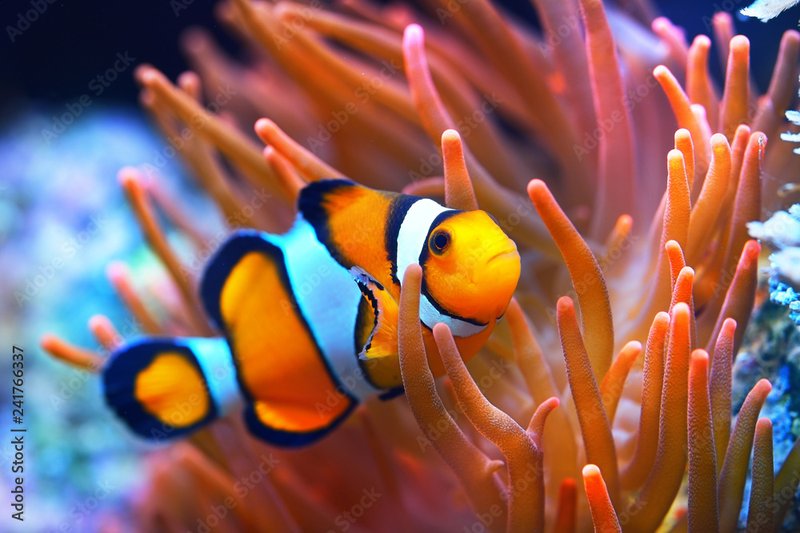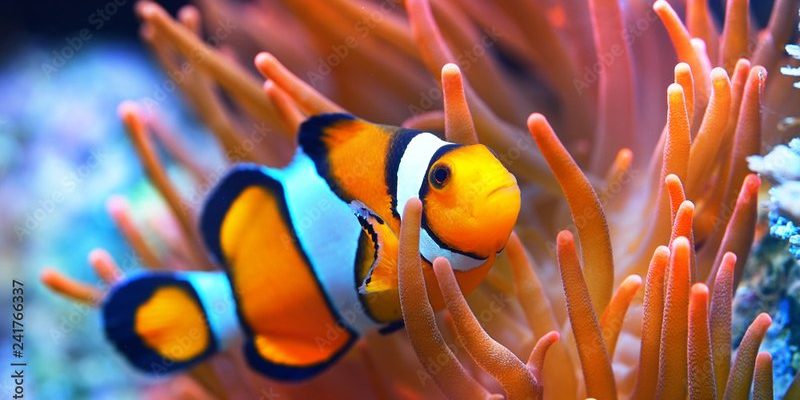
Let’s dive into some of the remarkable adaptations of clownfish. From their symbiotic relationship with sea anemones to their colorful appearances, each trait plays a vital role in their survival. Understanding these adaptations gives us a deeper appreciation of these little fish and the ecosystems they inhabit. So, grab your gear, and let’s explore how clownfish make the underwater world their vibrant home.
The Colorful Coating: A Protective Hue
One of the first things you notice about clownfish is their bright colors. These colors do more than make them look adorable; they serve as a form of protection and communication. The orange and white stripes can help clownfish blend in with the bright colors of the sea anemones. This camouflage is a clever trick to avoid predators. Fish like larger predators can be less likely to spot them when they are nestled among the anemone’s tentacles.
Moreover, their vibrant colors can signal to other clownfish. You might be wondering, “How do they communicate?” Clownfish use their colors to show aggression or readiness to mate. It’s like their very own social media platform, helping them to establish territory or attract a partner. So, while the colors are beautiful, they are also practical—serving two purposes at once!
Symbiosis with Sea Anemones
One of the most incredible adaptations of clownfish is their relationship with sea anemones. Clownfish and anemones have a symbiotic relationship. This means they help each other out: the clownfish gain protection, while the anemone benefits from nutrients found in clownfish waste. It’s a genuine underwater buddy system!
But how does a clownfish safely navigate an anemone’s stinging tentacles? Here’s a fun fact: clownfish have a special mucus coating on their skin that protects them from the stings. Before they make themselves at home in an anemone, baby clownfish undergo a sort of training period. They swim close to the tentacles, gradually getting used to the stings until their skin adjusts. This adaptation lets them enjoy a safe haven while also offering their anemone a reliable source of food.
Territorial Behavior
Clownfish are known for being quite protective of their homes. They are territorial creatures, particularly the dominant female in a group. When it comes to defending their anemone, these little fish can be fierce. They will chase away potential threats, like larger fish or other clownfish, to keep their home safe.
This behavior is vital for their survival. By establishing and defending their territory, clownfish ensure access to food and a safe nesting area. Female clownfish often lay their eggs on flat surfaces near the anemone, which adds another layer of protection for their young. Who knew such small fish could have such big personalities?
Adaptability to Environment
Clownfish are quite adaptable to their surroundings. They can live in various types of sea anemones, which is essential because not every anemone is available in every part of the ocean. These fish are known to inhabit the warmer waters of the Pacific and Indian Oceans, where you can find different species of anemones to settle down with.
Their ability to thrive in different conditions is like a traveler who can easily adjust to new cultures. Clownfish can also adapt their diet based on what’s available, munching on zooplankton, small crustaceans, and even algae when needed. This flexibility helps ensure they can find food and survive in challenging situations, like shifts in temperature or food scarcity.
Parental Care: A Family Unit
Another noteworthy adaptation of clownfish is their strong commitment to parental care. Unlike many fish species that scatter their eggs and leave them to fend for themselves, clownfish actively care for their young. After laying their eggs, the female will guard them, while the male keeps watch and helps aerate the eggs by fanning them with his fins.
This nurturing behavior significantly increases the chances of survival for their offspring. They create a nurturing environment right by the anemone, which provides additional protection from predators. It’s a heartwarming example of family loyalty in the underwater world, showing that even in the depths of the ocean, love and care exist.
Learning from Experience
Clownfish are also intelligent creatures. They learn from their experiences, especially when it comes to navigating their environment. They recognize patterns, remember locations of predators, and even recall the safest routes to food sources. This ability to learn and adapt is crucial for survival in their sometimes harsh underwater world.
Research has shown that clownfish can recognize their owners when kept in captivity and may even form bonds with them. This kind of learning behavior is not just confined to their interactions with humans. In the wild, clownfish use their experiences to navigate complex environments filled with both dangers and opportunities, making them quite clever little fish.
In conclusion, clownfish exemplify how adaptations can help creatures thrive in their natural habitats. From their vibrant colors and symbiotic relationships to their strong parental instincts and intelligence, these fish are more than just a pretty face in an anemone. Understanding these adaptations not only helps us appreciate clownfish but also highlights the complexity of marine ecosystems and the wonders of evolution. Just like a great coffee chat, learning about these little creatures opens up a whole new world of fascination. So, next time you spot a clownfish, take a moment to admire its resilience and beauty in the underwater realm!

